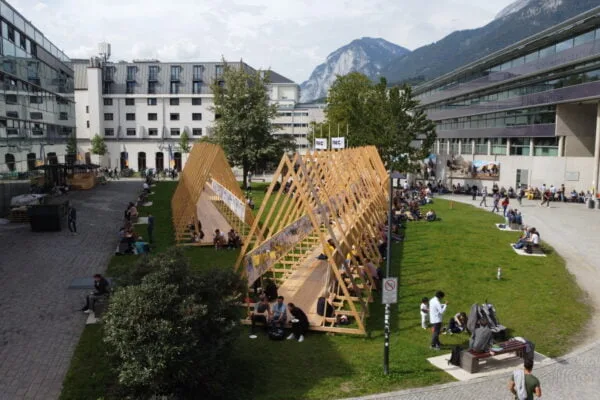
NAME:
SOWI - Garden
BUILDING:
SOWI
FLOOR:
0
TYPE:
Garden
CAPACITY:
2000
ACCESS:
Public Access
EQUIPMENT:
---
An increase in extreme weather events as a result of climate change is already evident, particularly in mountainous regions. These events lead to an increased occurrence of hydrological and gravitational natural hazards, such as debris flows, rockfalls, landslides, and floods. These natural events become hazardous when they directly affect human activities. The need for more extensive monitoring and intensified maintenance measures places a burden on those responsible for trail management. In the future, we can expect drier summers, more users of natural areas, winters with less snow, and a consequent extension of the hiking and mountaineering season at ever higher altitudes. The AV.GEO.CLIM project, initiated by the Austrian Alpine Club (ÖAV), focuses on the increase in alpine natural hazards due to climate change and the associated risks to society along hiking trails. The ÖAV is faced with the challenge of maintaining a historically grown network of trails with a length of around 26,000 kilometres, which is not designed for the climate crisis, on a voluntary basis and fulfilling its traffic safety obligations. The project focusses on hazard analysis, mapping, and communication to identify endangered areas early, disseminate this information, and enhance safety. Through collaboration with local experts and the involvement of mountaineers, spatially relevant data is recorded, analysed and used for adaptation strategies. The challenge in managing risks in mountaineering lies both in hazard mapping and in communicating risks to users. To achieve this, standardized methods for recording and evaluating natural hazards are being developed, which can be applied by experts, including trail wardens, mountain guides, and hut managers. Cooperation with local experts is crucial in this endeavor. Additionally, the project aims to actively involve civil society by providing easily accessible information. The results will be disseminated through the ÖAV, publications, and cartographic representations, engaging the broader public. This approach aims to raise awareness of the impacts of climate change and enhance safety on hiking trails through improved risk communication.

Notifications